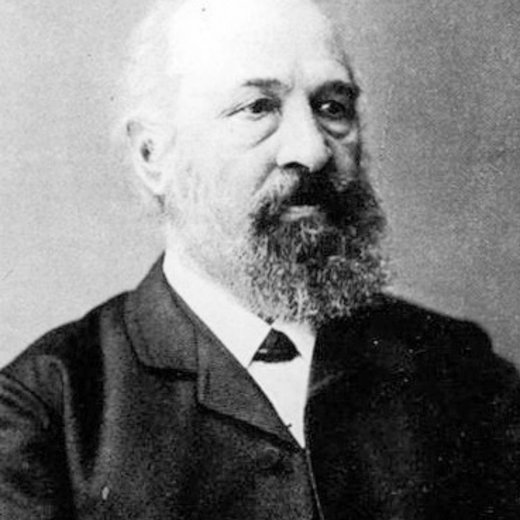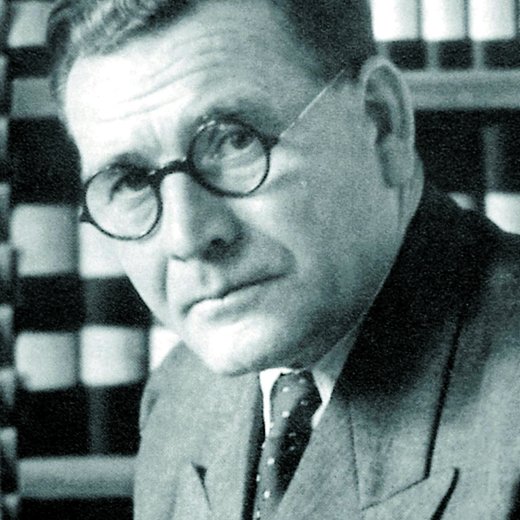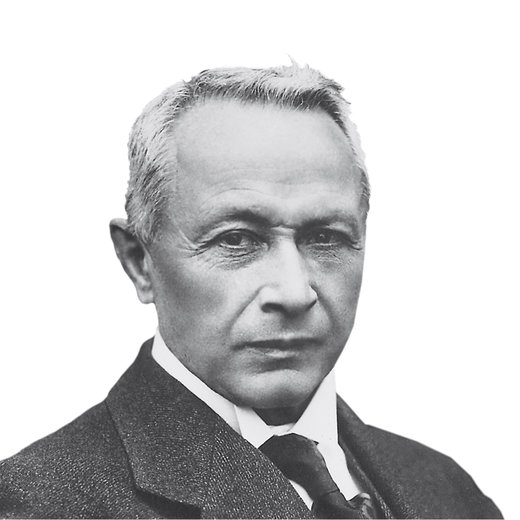Bernburg-Strenzfeld - university location with tradition
Since 1954, education and research have been at home here, in close connection with the farms of the Magdeburger Börde and the fertile agricultural plain in the heart of Saxony-Anhalt. The tradition of research goes back to the century before last.
Predecessor institutions of the Anhalt University of Applied Sciences
1961 - Bernburg University of Applied Sciences (Hochschule für Landwirtschaft Bernburg)
1967 - University of Agricultural and Food Economics (Hochschule für Land- und Nahrungsgüterwirtschaft Bernburg)
1988 - "Thomas Müntzer" University of Agricultural and Food Economics (Hochschule für Land- und Nahrungsgüterwirtschaft „Thomas Müntzer“)
1991 - Anhalt University of Applied Sciences
1998 - Anhalt University of Applied Sciences with locations in Bernburg, Dessau, Köthen
A place filled with history
-
Beginnings

Prof. Hermann Hellriegel
The beginnings of agricultural research in Bernburg
1845
The first modest beginnings of an experimental agricultural system. The establishment of an experimental garden on 5 acres of leased land by the Agricultural Association in Bernburg (Landwirtschaftlicher Verein in Bernburg).
1880
The Duchy of Anhalt experimental station (Herzoglich Anhaltische Versuchsstation) in Bernburg was opened by the then government when the German sugar beet industry suggested it was necessary in order to improve the cultivation of beets. The first director of the institution was Prof. Hermann Hellriegel.
1886
Hermann Hellriegel made the groundbreaking scientific discovery of nitrogen fixation, which is the ability of peas, beans and other legumes to symbiotically bond with nitrogen-fixing bacteria.
1948
The experimental station in Bernburg was converted into the Institute for Plant Breeding (Institut für Pflanzenzüchtung) and it was moved to Bernburg-Strenzfeld.
-
Development

Prof. Dr. Fritz Oberdorf
Site development under the direction of Prof. Dr. Fritz Oberdorf
1951
The Institute for Plant Breeding (Institut für Pflanzenzüchtung) was taken over by the German Academy of Agricultural Sciences (East Germany) (Deutsche Akademie der Landwirtschaftswissenschaften). Construction of a new institute complex with new buildings and greenhouse facilities.
1952
A technical school for the training of scientific and technical assistants was founded (existed until 1968).
1957
Relocation of the Institute for Agricultural Economics (Institut für Agrarökonomie) from Potsdam-Bornim to Bernburg-Strenzfeld. Start of higher education and courses equivalent to those of a university. Education and training of organizers and leaders for socialist agriculture.
1960
Integration of the Institute of Agranomy Neugattersleben (Institut für Agranomie Neugattersleben) and the Institute of Zootechnics Güstrow-Schabernack (Institut für Zootechnik Güstrow-Schabernack) into the Institute for Agricultural Economics (Institut für Agrarökonomie) located in Bernburg-Strenzfeld. Construction of institutes and communal buildings in Strenzfeld.
1961
The Institute for Agricultural Economics (Institut für Agrarökonomie) became the Bernburg University of Applied Sciences (Hochschule für Landwirtschaft Bernburg). When the institution was established it was granted the right to award doctorates and postdoctoral degrees. Beginning of training and education of student agriculturalists and horticulturalists in a 2.5-year combined study program. The first vice-chancellor was Prof.Dr. Fritz Oberdorf.
1967
Restructuring of the university. In addition to the designation University of Agricultural and Food Economics, the institution was given a clear agro-economic profile and at the same time also focused on food economics. Training and education were now carried out with a 2.5-year direct course of study and ended with a diploma and the professional title of “Agricultural Engineer Economist” (Diplom-Agraringenieurökonom). Continuing education was established and granted equal status at the university.
1969
The Institute for Plant Breeding (Institut für Pflanzenzüchtung) became the Institute for Grain Research Bernburg-Hadmersleben (Institut für Getreideforschung Bernburg-Hadmersleben)
1970
Incorporation of an organizational and computer center at the university. Establishment of a data storage system for agriculture and the processing of accounts agricultural and food industry companies of the former GDR.
1981
Establishment of a new 4-year direct degree course in agricultural economics. This was followed by a similar degree program in business administration for the food industry. The admission requirements were the general university entry qualifications (Abitur) and a relevant vocational qualification. The degree awarded was a with the professional title of agricultural economist (Diplom-Agrarökonom).
1988
Name change of the university to "Thomas Müntzer" University of Agricultural and Food Economics (Hochschule für Land- und Nahrungsgüterwirtschaft „Thomas Müntzer“).
-
Restructuring
Restructuring of teaching and research in Bernburg-Strenzfeld after German reunification
1990
Acquisition of the university and institute in Strenzfeld by the newly formed state of Saxony-Anhalt. After the political change in Germany a restructuring in agricultural research and in the education of students took place. New training documents and teaching contents were developed in the newly formed institutes.
The Anhalt Plant Breeding Company Bernburg was established (Anhaltische Pflanzenzucht GmbH Bernburg) and KWS AG Einbeck acquired the variety rights, buildings and machinery from the breeding departments at the Institute for Grain Research (Institut für Getreideforschung). Construction of the KWS maize breeding station (KWS-Maiszuchtstation) and the Lochow-Petkus GmbH grain breeding station (Getreidezuchtstation der Lochow- Petkus GmbH) at the site.
1991
Anhalt University of Applied Sciences with locations in Bernburg, Dessau and Köthen was founded.
Establishment of the departments of Agriculture, Ecotrophology and Landscape Development and Economics at the Bernburg campus of the Anhalt University of Applied Sciences.
1992
The center for arable farming and plant cultivation (Lehr- und Versuchsanstalt für Acker- und Pflanzenbau) was established with a teaching and research facility as the successor facility to the Institute for Grain Research (Institut für Getreideforschung).
1998
Fachhochschule Anhalt was renamed as Hochschule Anhalt (FH) – University of Applied Sciences.
2001
The center for arable farming and plant cultivation (Lehr- und Versuchsanstalt für Acker- und Pflanzenbau) was taken over by the newly founded Saxony-Anhalt State Institute for Agriculture and Horticulture (Landesanstalt für Landwirtschaft und Gartenbau Sachsen-Anhalt) with headquarters in Bernburg-Strenzfeld.
2010
The LLG’s teaching and experimental materials were sold to the German Agricultural Society (Deutsche Landwirtschafts-Gesellschaft).
The International Plant Production Centre of the German Agricultural Society (Internationales Pflanzenbauzentrums der Deutschen Landwirtschaftsgesellschaft) was founded on the Strenzfeld campus.
-
Development as an air base

Hugo Junkers
1935
Development of the "Strenzer Flur" by building an air base for the Reich Aviation Ministry (Reichsluftfahrtministerium).
1936
Leasing of a large part of the site to the aircraft construction company Junker Plane and Motor Works (Junkers Flugzeug- und Motorenwerke) Dessau – a second plant for aircraft production in Bernburg was opened. Fighter planes are assembled and flown in.
1945
Extensive dismantling and demolition work was done on the air base after the end of the war.